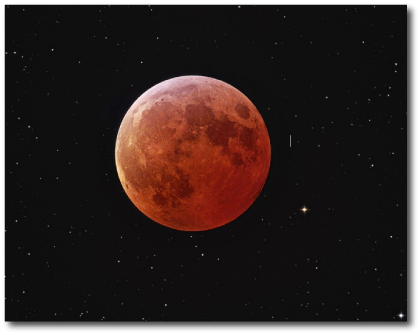
Image Source: APOD.
Last night, the alarm went off at 2:45 AM, just prior to the start of the full lunar eclipse. Remarkably, the fog had stayed away. The air was slightly warm, and the town was absolutely quiet. The shadow of the Earth was covering nearly the entire lunar surface, with just a small oblique portion of the lower right hemisphere still in sunlight. A few minutes later, the whole moon was glowing a dull orange-red against the easily visible stars of the ecliptic. It was creepy, weird. Definitely worth getting out of bed for.
The Sun and the Moon occupy nearly the same angular size in Earth’s sky. This means that to good approximation, the patch of sky covered by the moon during a central lunar eclipse contains stars that can see the Earth in transit across the face of the Sun.
And during a lunar eclipse, they see a double transit.

The famous “tooth” in the HST light curve for TrES-1 is generally attributed to the planet passing over starspots, but for those who prefer not to shave with Occam’s razor, it can be equally well modeled by a double transit.

Last night, during the eclipse, the Moon (at RA 22h 26 min, Dec= -09 deg 57 min) was only a few degrees away from the planet bearing stars GJ 876, GJ 849, HD 21707, and HD 219449.

If we had high resolution high accuracy radial velocities from around the time of the toothy transit, it might be possible to distinguish between the double transit and starspot scenarios — the starspots contribute to the radial velocity via the Rossiter effect. With good enough data you might be able to make a longitudinal map of the starspots (especially if starspot evolution is slow compared to stellar rotation, so you can combine data over several stellar rotations). Then you can see if the tooth location matches up with a longitude with enough starspot activity to account for the intensity spike. :^) Here I am daydreaming about more and better radial velocity data again… :^)
LOL tfisher98. Aren’t we all? ;^)